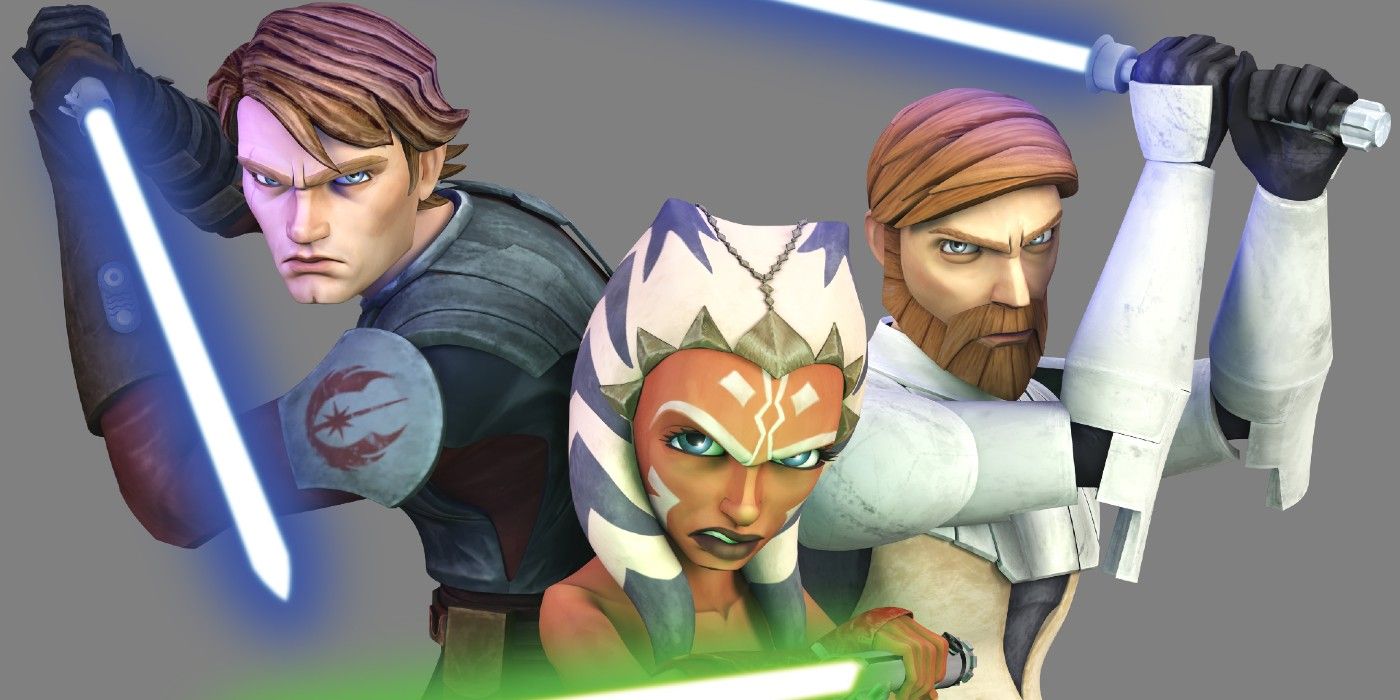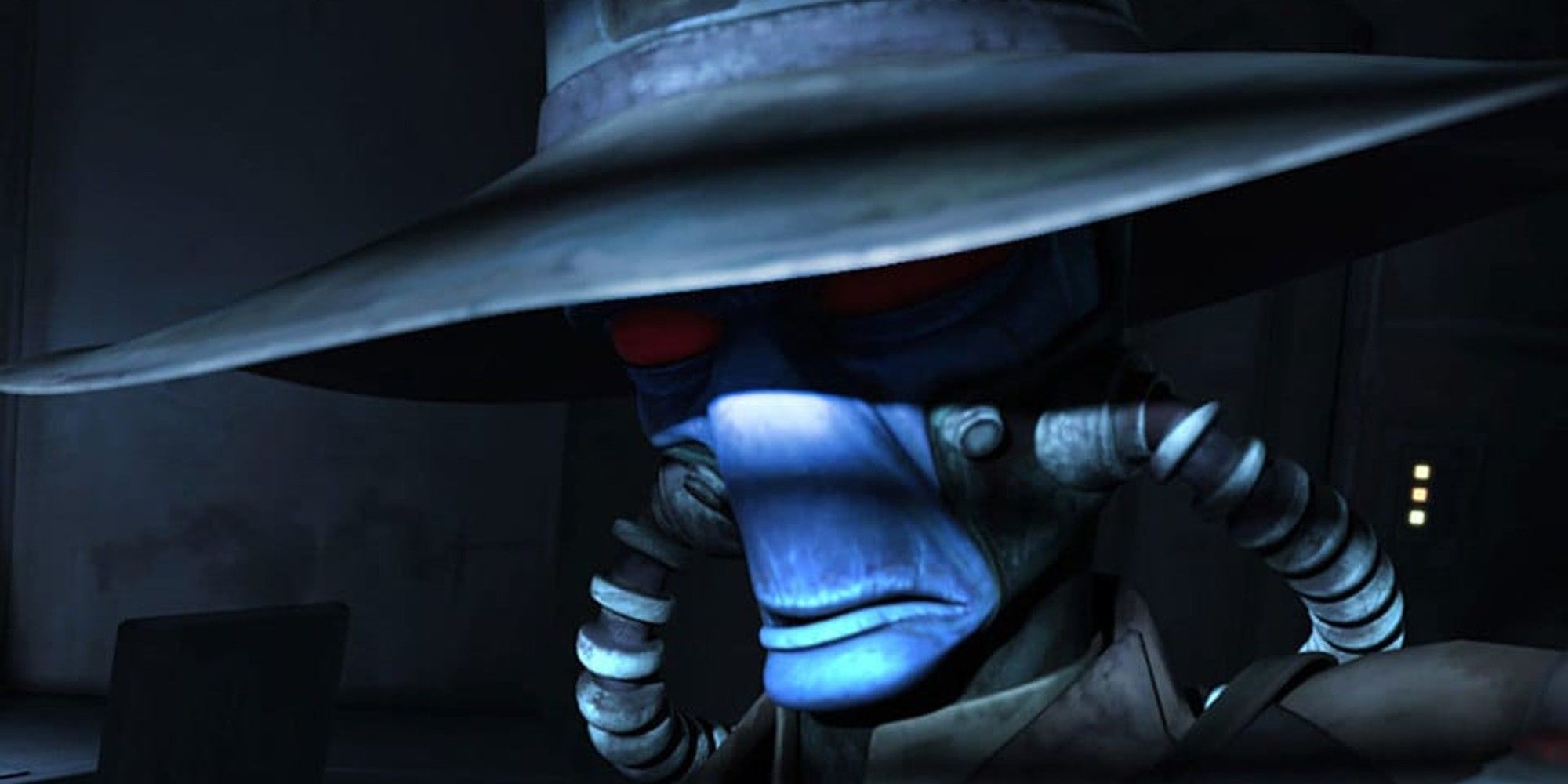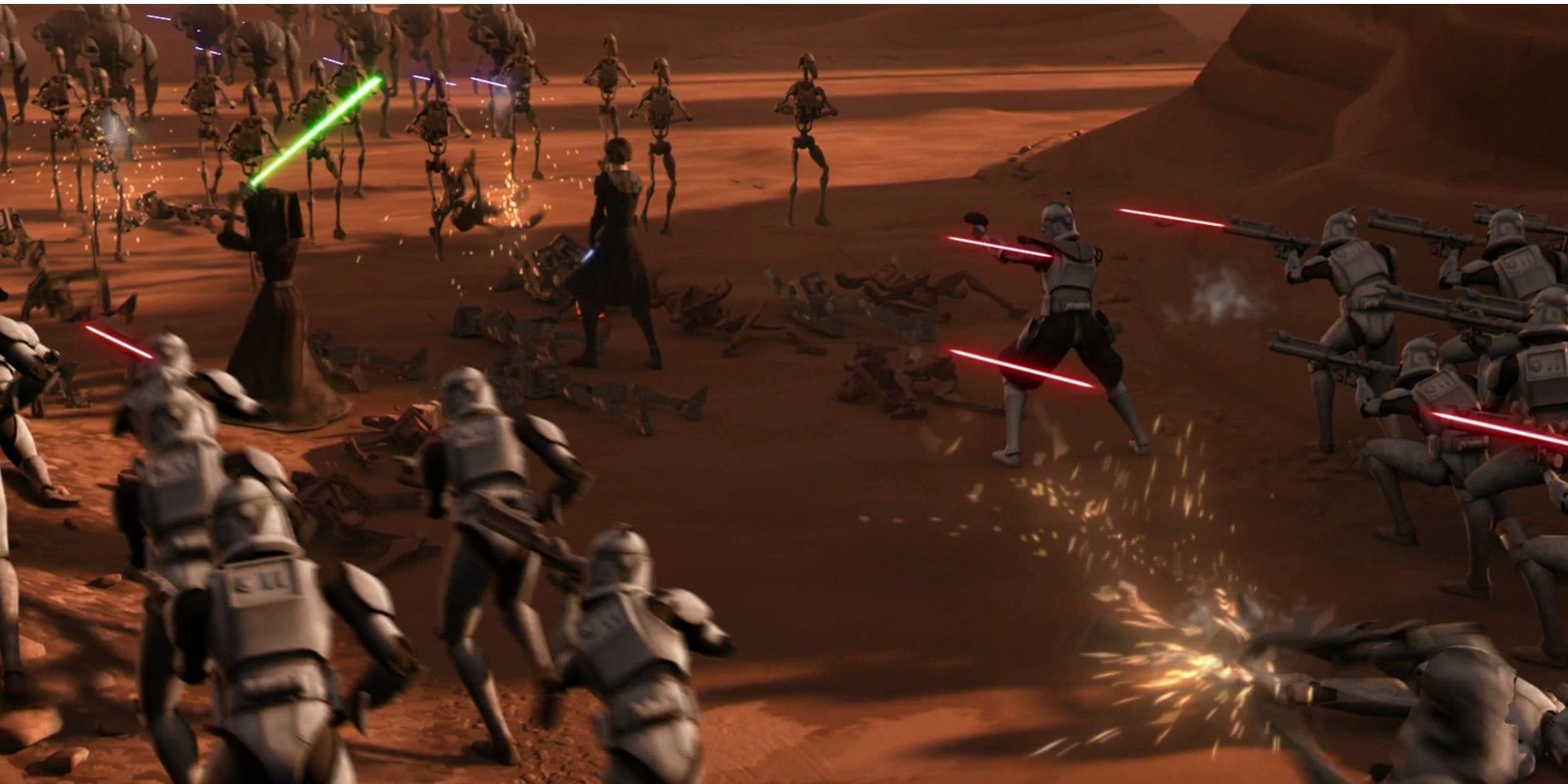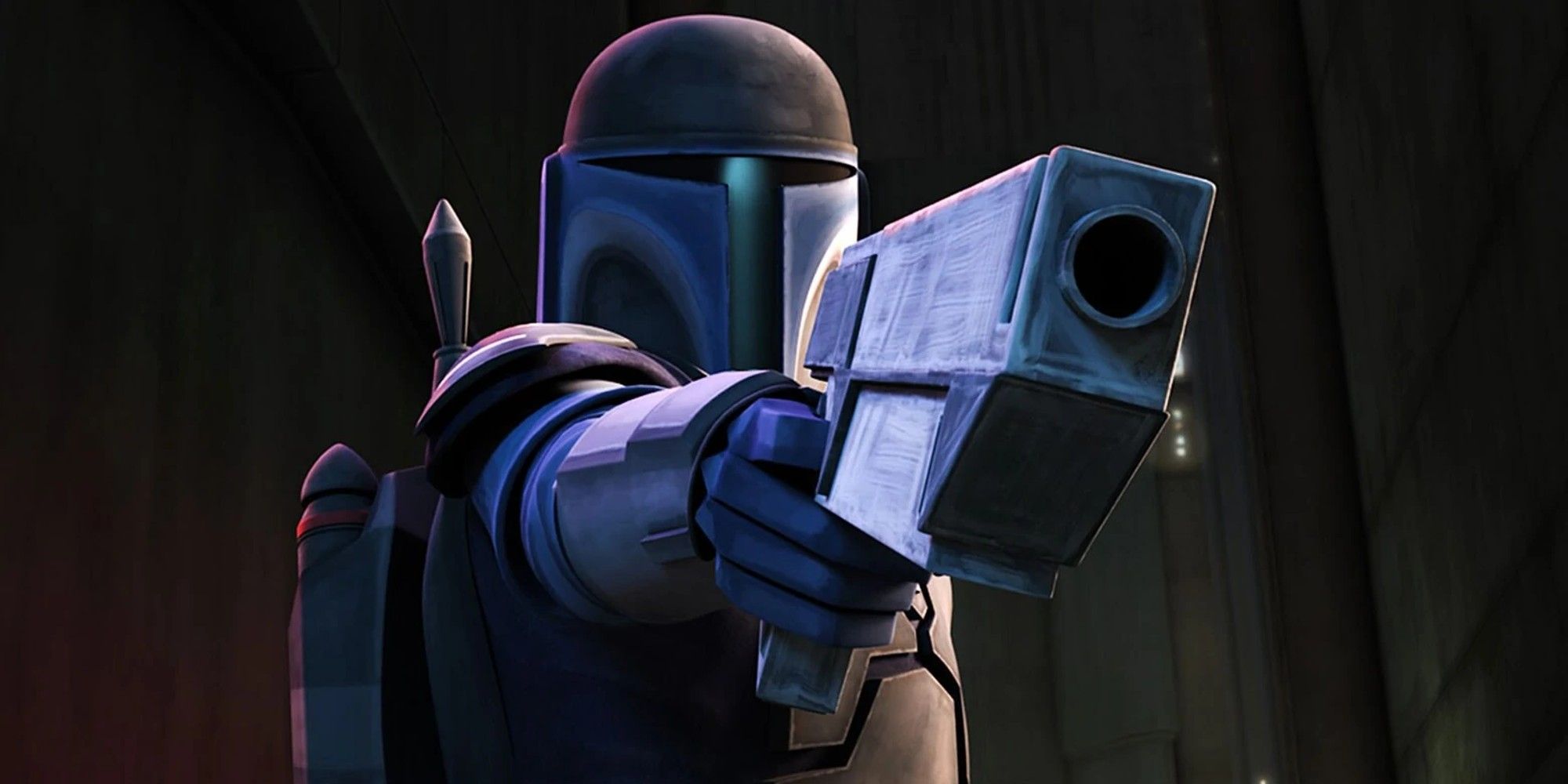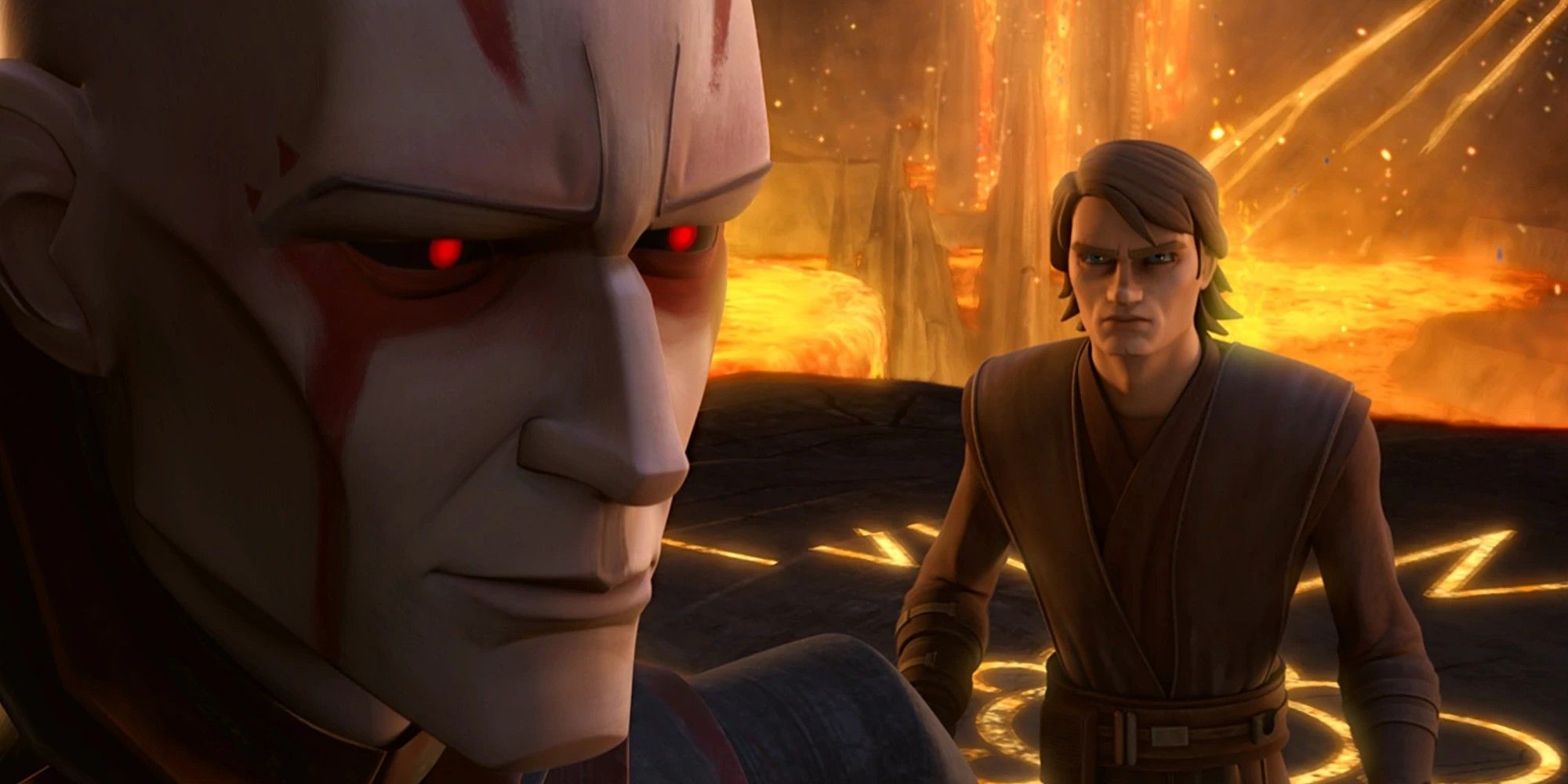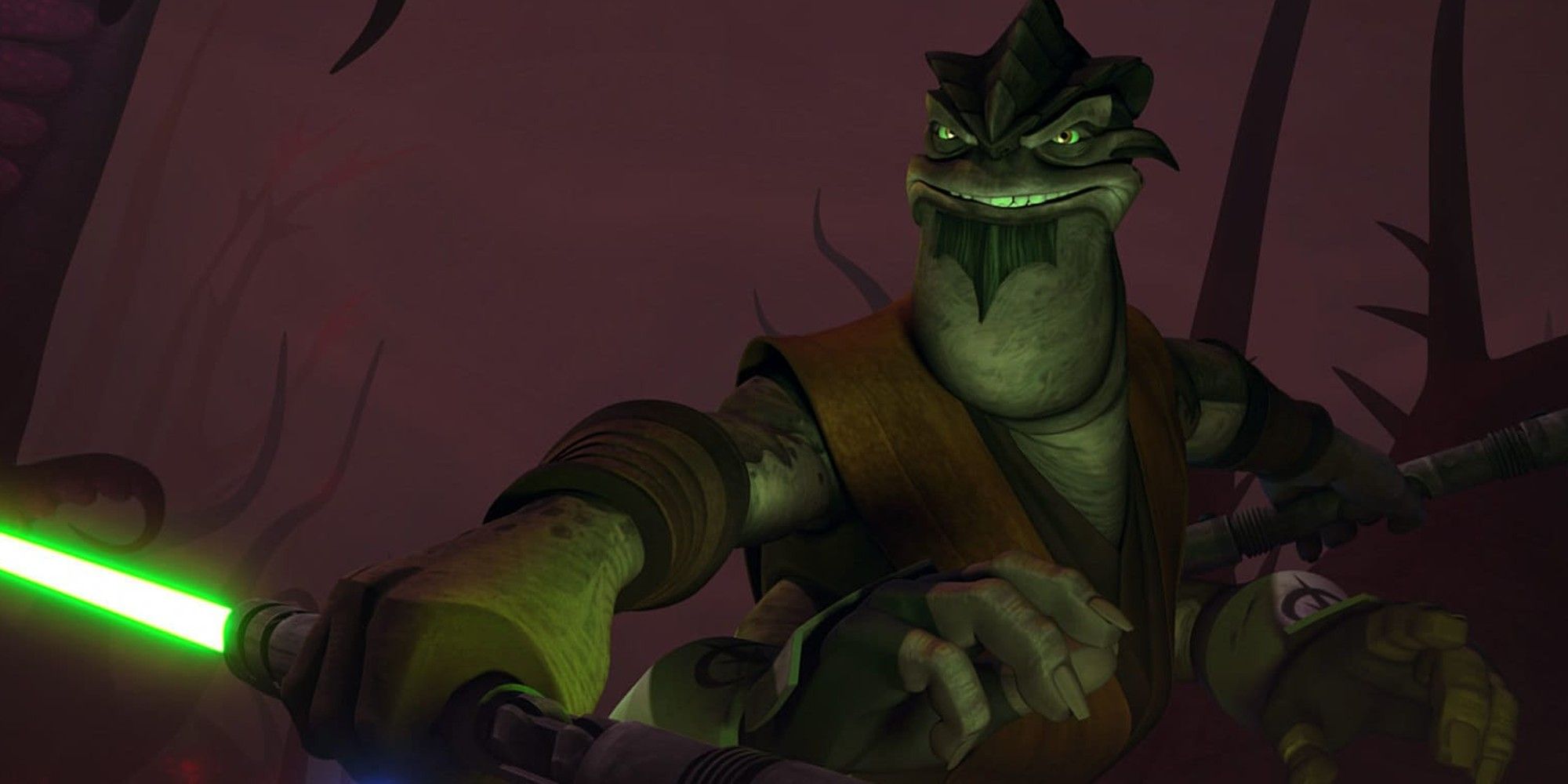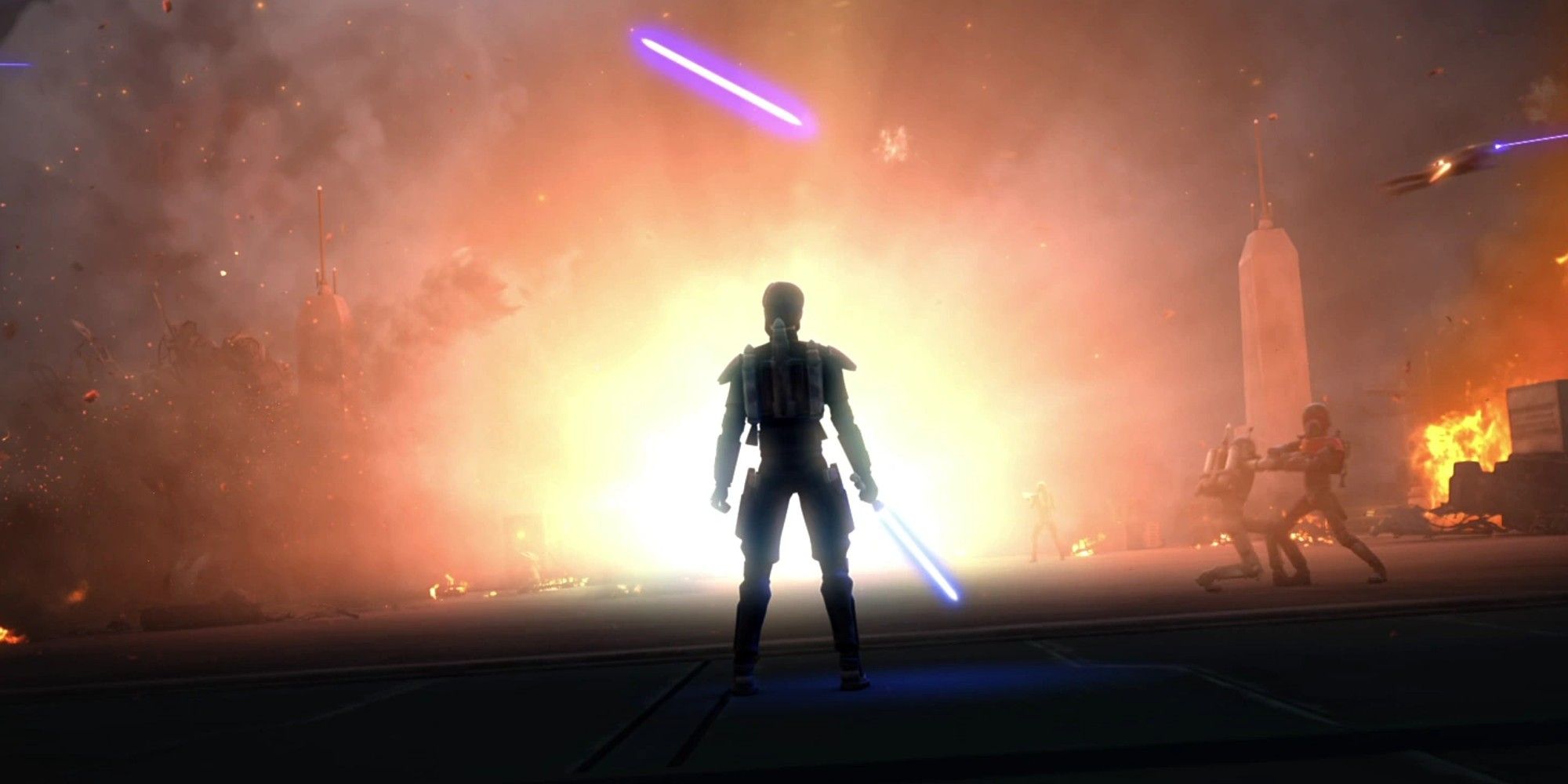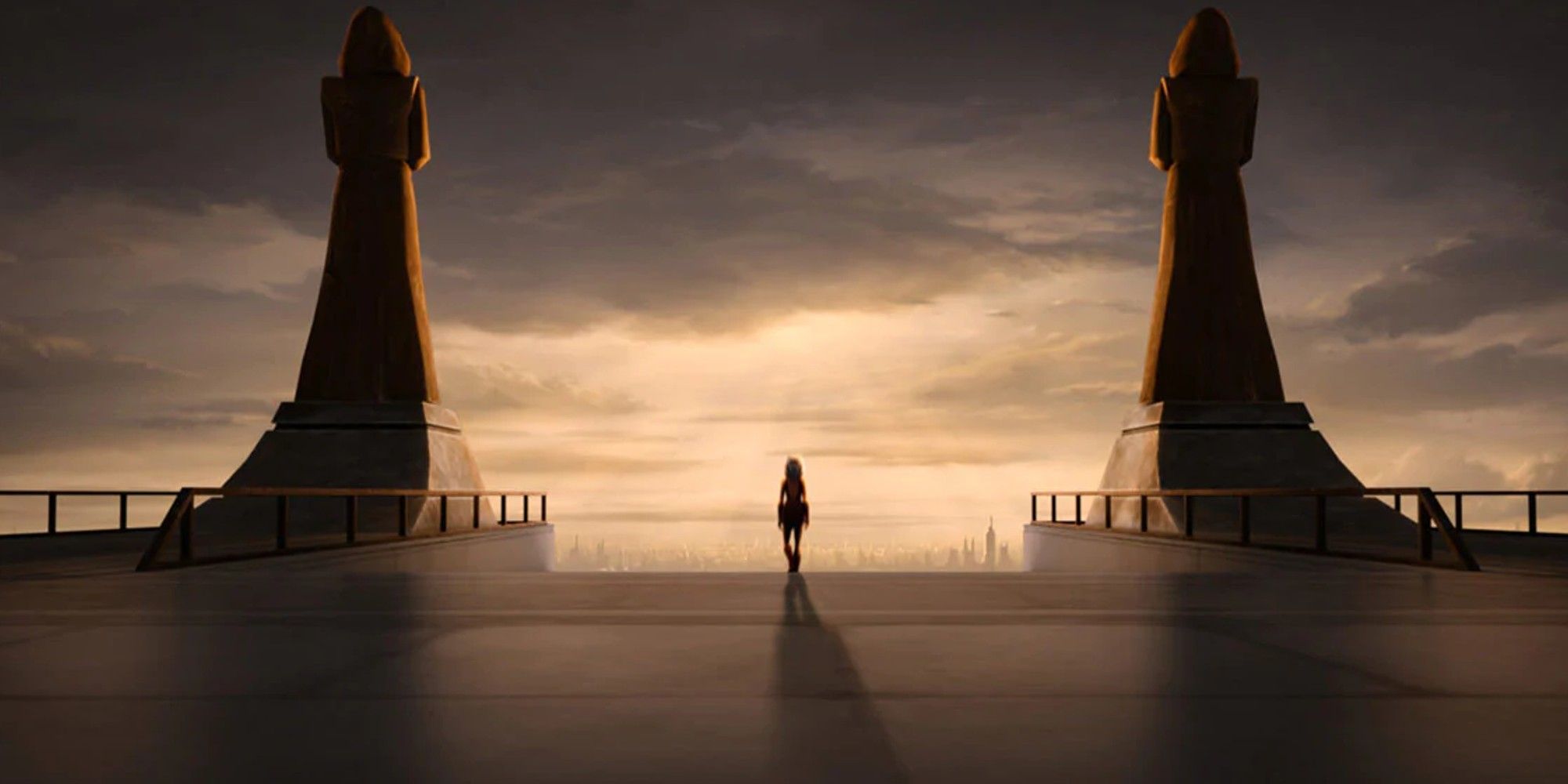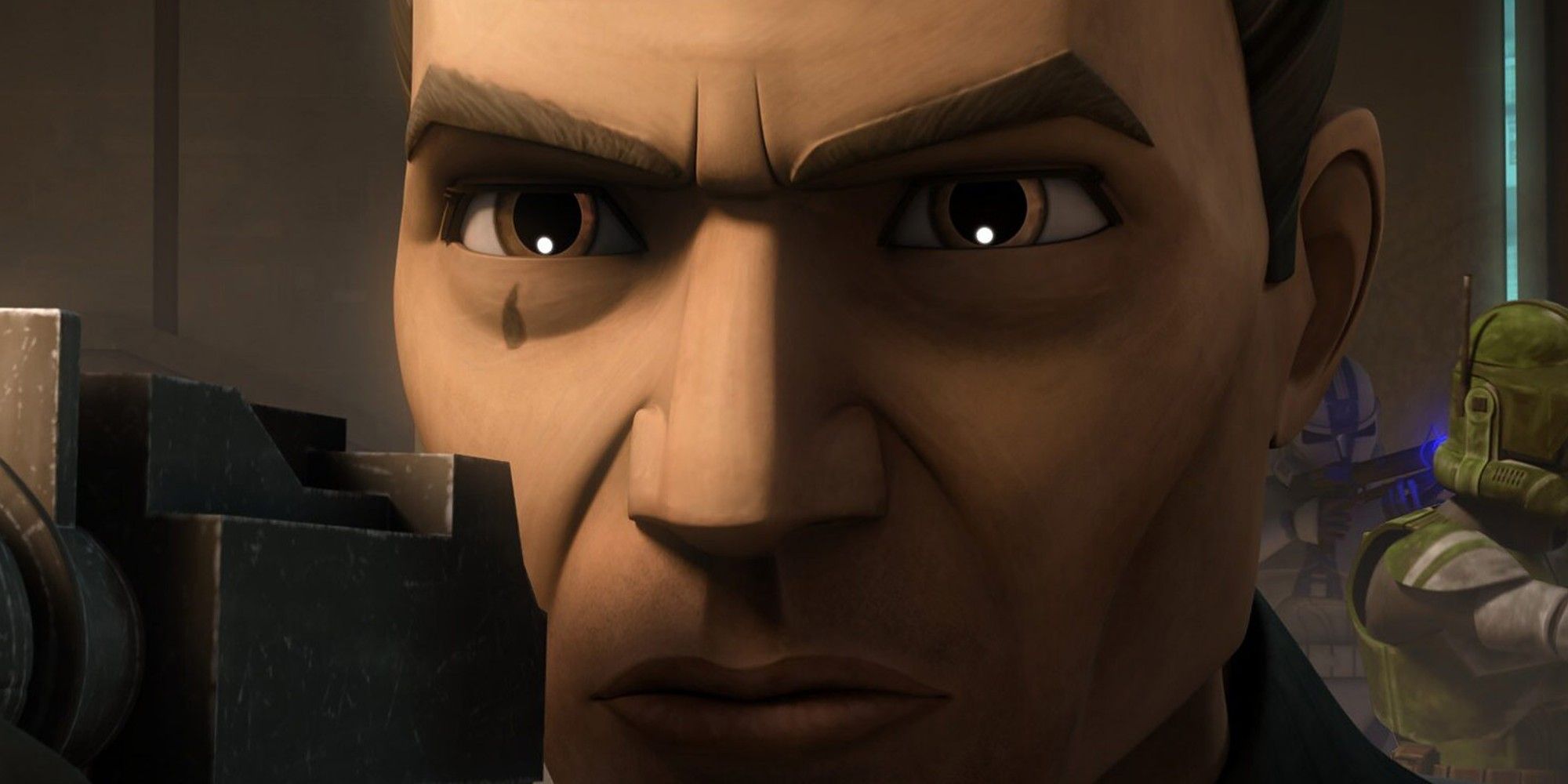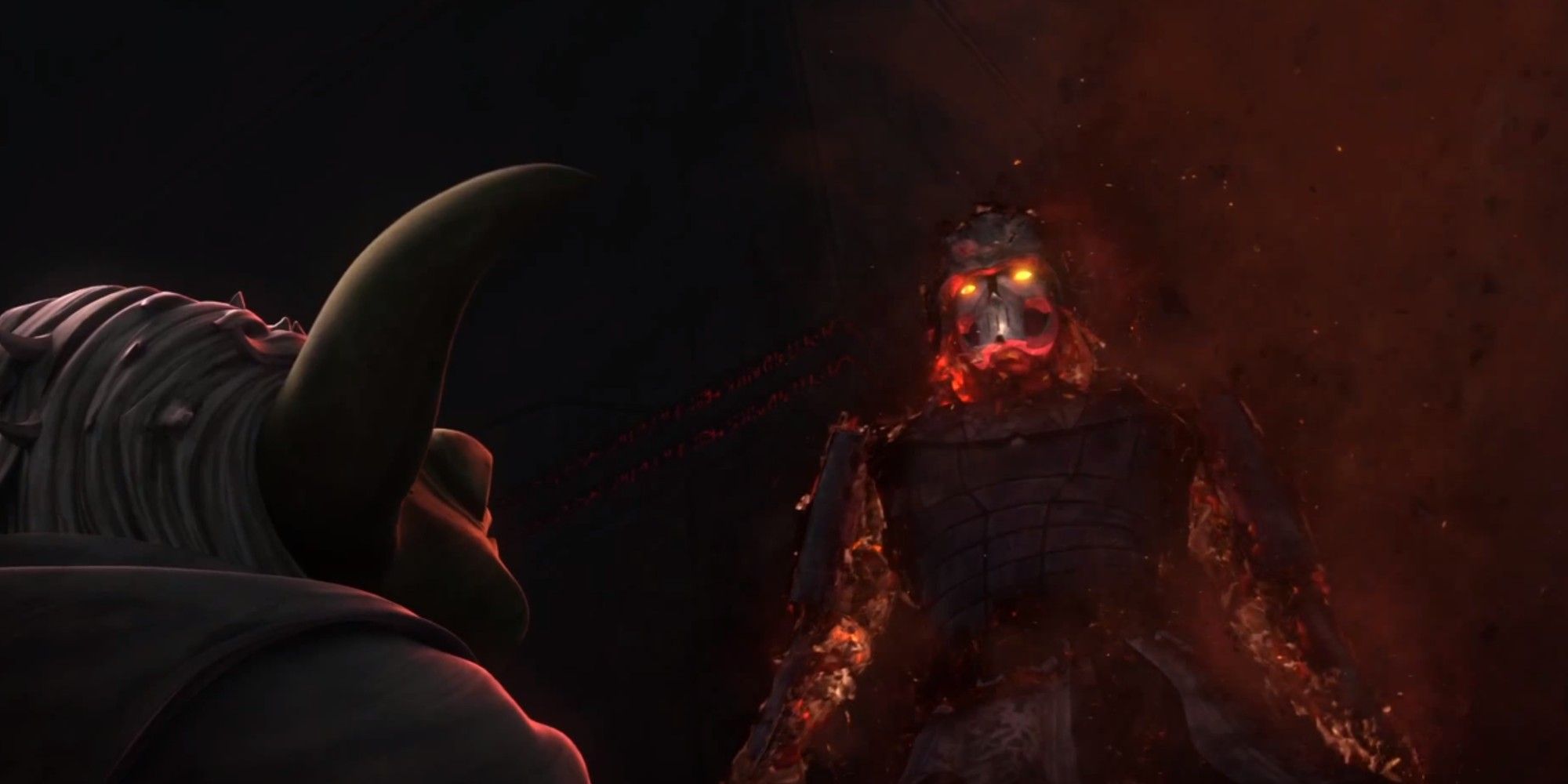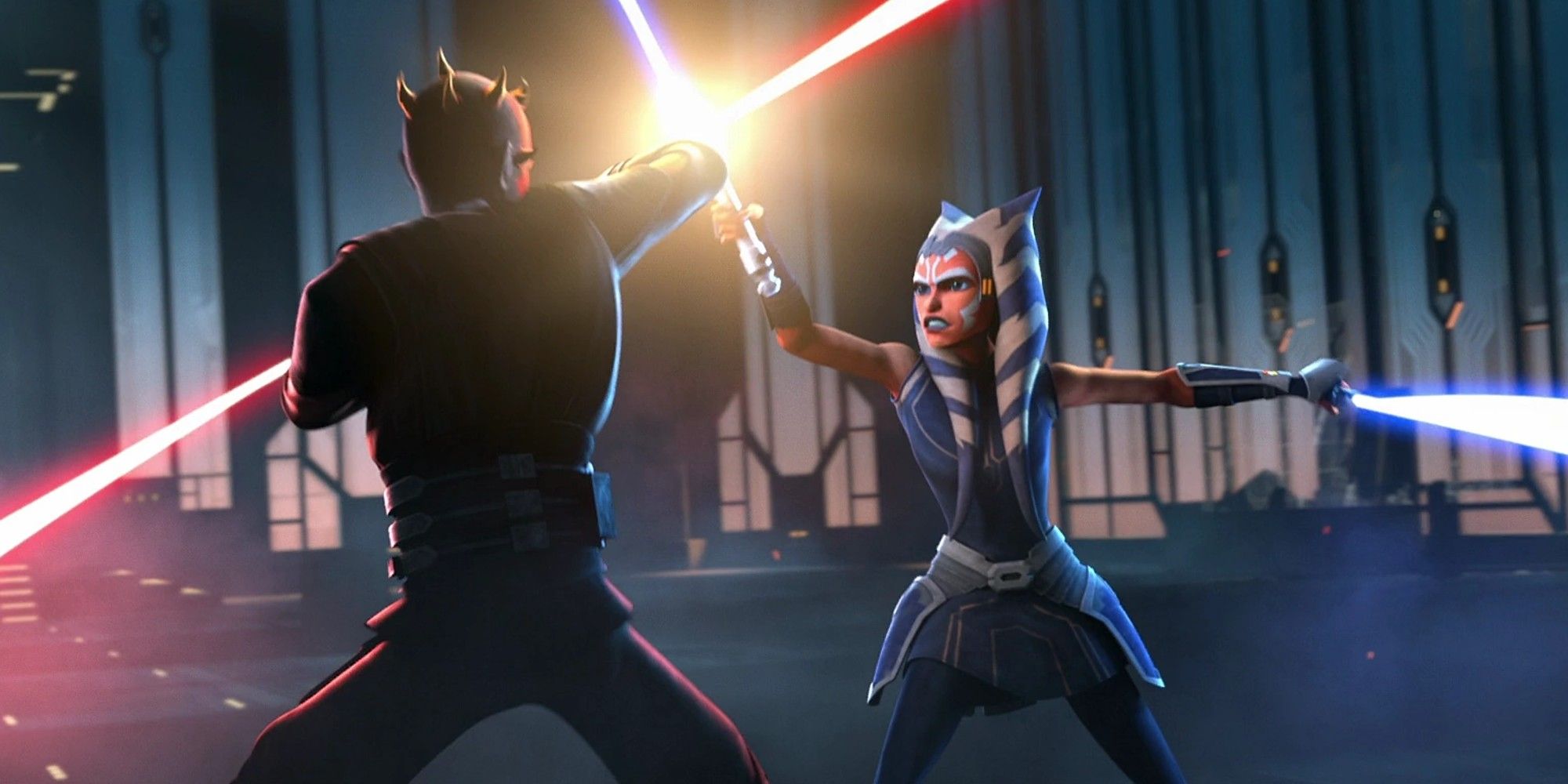For seven seasons and 133 episodes, Star Wars: The Clone Wars cemented itself as one of the most impressive pieces of Star Wars canon ever released. Released during a time when the prequels were still mostly punching bags and Star Wars as a whole was on the decline in favor of Harry Potter and superhero movies, The Clone Wars proved that the series still had gas in the tank and ended up becoming one of its most important pieces.
And its unique structure compared to other animated shows at the time aided in that. It’s story arcs, ones that rarely span more than 3-4 episodes, helped establish a wide array of characters and ensemble players that showcased the sheer scale of the war while also delivering some of the best individual stories in the franchise.
The Holocron Hunt
The first chronological appearance of fan favorite bounty hunter Cad Bane (release wise he had already appeared in the Season 1 finale Hostage Crisis), this three-episode arc opens Season 2 in grand fashion. Cad Bane is hired by Darth Sidious to steal a Jedi Holocron. For what reason? So he can use it to read a kyber crystal containing the whereabouts of every single Force sensitive child.
The stakes are high in this one as the Jedi race against time to get the Holocron and crystal back, but the real treat of the arc is seeing Cad Bane get away on multiple occasions and always one step ahead of the Jedi. Even at the end, they still aren’t able to catch him, and it gives the Jedi a fallibility that puts their eventual fall into more perspective.
Second Battle of Geonosis
As the longest arc in the series (5 episodes), the Second Battle of Geonosis absolutely justifies its length by exploring the lead up, the battle itself, and the aftermath all in one go. The Separatists have built yet another droid factory on Geonosis, this time with better equipment and more deadly droids. The Republic begins their assault on the planet once again to put a stop to it once and for all.
Prior to this point in the series, we’ve had a couple of massive scale arcs, with the biggest being Ryloth which had the unique structure of showing the battle in space, in the air, and on the ground. This is the biggest the series has gotten up to this point though, and the huge battle that results from it is impressive and remains one of the highlights of the entire series while also setting up the future friendship between Ahsoka and Bariss Offee.
Crisis on Mandalore
While its initial airing was met with controversy from long time Legends fans due to its deviations from canon at the time, Crisis on Mandalore is still exceptional in its own right. Obi-Wan heads to Mandalore to work with Duchess Satine and figure out the culprit behind missing Republic forces – while also dealing with his own feelings for the Duchess.
While it’s fun seeing Obi-Wan meet up with a previously unknown member of his past, the real meat of the arc which explores themes of terrorism and internal corruption are particularly relevant even today. Plus, the introduction of the Darksaber and Death Watch is a treat to see in retrospect, and Jon Favreau’s performance as the villainous Pre Vizla is chilling.
The Mortis Trilogy
Obi-Wan, Anakin, and Ahsoka find themselves in a mysterious realm only known as Mortis. It’s only residents are The Father, The Son, and The Daughter, all representing different aspects of The Force itself, and it’s here that Anakin’s destiny becomes painfully clear as The Son plots to overtake The Father as the ruler of Mortis.
Steeped in subtext, metaphor, and symbolism, The Mortis Trilogy marked a change in tone for the series as it headed into a more heady, surreal direction. It’s exploration of The Force brings it back to its mystical, mysterious nature from the original trilogy that prequels unfortunately forgot, and Anakin’s character development is a crucial turning point that leads into Revenge of the Sith.
Corruption on Umbara
Umbara is unique among Clone Wars arcs as it focuses almost entirely on side characters. Anakin is briefly shown at the start of the arc, but leaves a third the way through the first episode of this four episode storyline and is replaced by Jedi Master Pong Krell, who turns out to be a hard lined, tough general. Maybe a little too tough.
Filled with morally grey characters and scenarios, Umbara presents a darker side of the war that would probably be left out of the history books. It’s one of the darkest parts of the entire series, and its eventual resolution is left up to audience interpretation on whether the clones did the right thing in the end.
Fall of Mandalore
In his attempts to finally take down Kenobi, Maul forms an alliance with Death Watch to lure him back and finally take his revenge. What follows is one of the most heartbreaking segments of the entire series as Maul brings down the entirety of Mandalore in his conquest to rid the galaxy of Kenobi.
It’s a rough arc to sit through, especially if you’ve been watching chronologically. Seeing Obi-Wan at his lowest point prior to Revenge of the Sith is hard, and it also features Maul at his most terrifying, fully showcasing why he’s a threat to be recekoned with.
Ahsoka’s Trial
One of the questions that many fans had going into The Clone Wars was “what will happen to Ahsoka Tano?”. After all, she isn’t present in Revenge of the Sith nor even mentioned, so clearly something must have gone down for Anakin’s former apprentice to never be named.
The final four episodes of Season 5, which was the final season aired on Cartoon Network before its initial cancellation, explains what happened in great detail, and it’s a doozy. Suffice to say it’s a massive piece of growth for Ahsoka as a character and cements her place as one of the Star Wars canon’s greatest characters
The Truth About the Clones
Poor Fives. One of the most tragic arcs of the entire series, Fives discovers a conspiracy that affects all clones, and it follows his fruitless efforts to expose it despite the audience knowing that, no matter what he does, he has to fail. Order 66 must happen, and Fives can’t get out of this alive.
Normally with prequels there can be a sense of redundancy to everything since the audience knows what is going to happen, but the great thing about this arc is that it plays into that. The tragedy of it is that they did know and did nothing about it – and also makes the clones’ actions at the end of Revenge of the Sith all the more depressing.
Yoda’s Mission
It’s rare that we get a Yoda focused story but when we do, it’s always bound to be a more fantastical, spiritualistic journey then other characters. Yoda ends up contacted by the long deceased voice of Qui-Gon Jinn, forcing him to go on a journey of self-discovery and reflection as he learns that even he has things to discover about the nature of the Force.
It’s a beautiful arc, not just for its simplicity but how it recontextualizes Yoda in the prequels. Yoda is a different character entirely at points from his original trilogy (and even sequel trilogy) counterpart, and this explains that even Yoda lost his way during the war. The difference between Yoda and the rest of the Jedi is that Yoda began to find his way back.
Siege of Mandalore
The final arc of the series, the Siege of Mandalore was a dream come true for many Star Wars fans to finally see come to light, and it did not disappoint. Taking place at the same time as Revenge of the Sith, it allows Ahsoka and Rex as they lead a squad of troopers to Mandalore to reclaim it from Death Watch and Maul, while then dealing with the events of Order 66.
Like a lot of great finales, Siege of Mandalore focuses on what makes Clone Wars great in the first place and centers in on it’s two real lead characters – Ahsoka and Rex. Their arcs are wrapped up beautifully here even if we know that they return in future projects, and those final shots are simply sublime.






































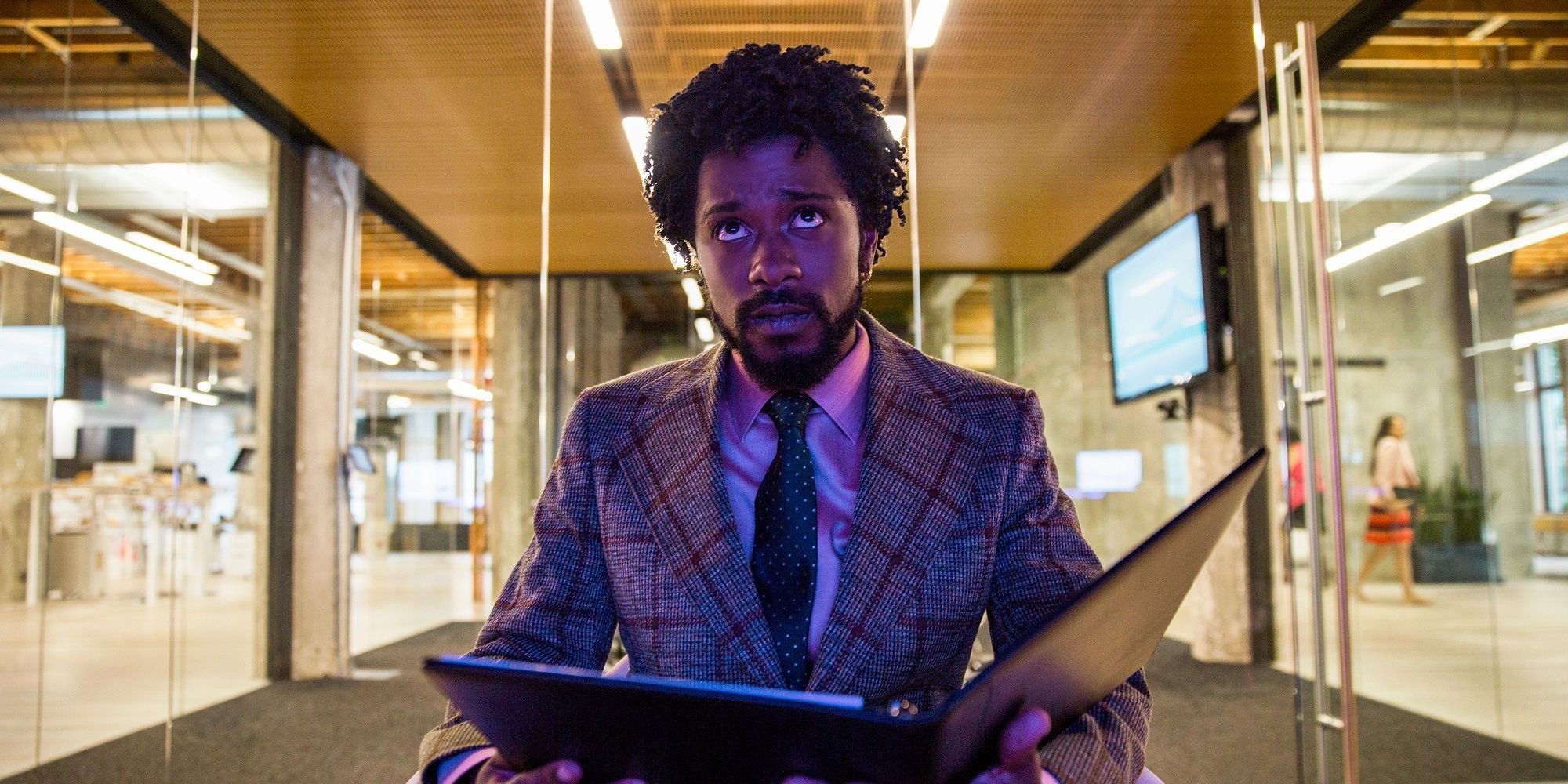



















![Social Media Spring Cleaning [Infographic] Social Media Spring Cleaning [Infographic]](https://imgproxy.divecdn.com/9e7sW3TubFHM00yvXe5zvvbhAVriJiGqS8xmVFLPC6s/g:ce/rs:fit:770:435/Z3M6Ly9kaXZlc2l0ZS1zdG9yYWdlL2RpdmVpbWFnZS9zb2NpYWxfc3ByaW5nX2NsZWFuaW5nMi5wbmc=.webp)
![5 Ways to Improve Your LinkedIn Marketing Efforts in 2025 [Infographic] 5 Ways to Improve Your LinkedIn Marketing Efforts in 2025 [Infographic]](https://imgproxy.divecdn.com/Hv-m77iIkXSAtB3IEwA3XAuouMwkZApIeDGDnLy5Yhs/g:ce/rs:fit:770:435/Z3M6Ly9kaXZlc2l0ZS1zdG9yYWdlL2RpdmVpbWFnZS9saW5rZWRpbl9zdHJhdGVneV9pbmZvMi5wbmc=.webp)

